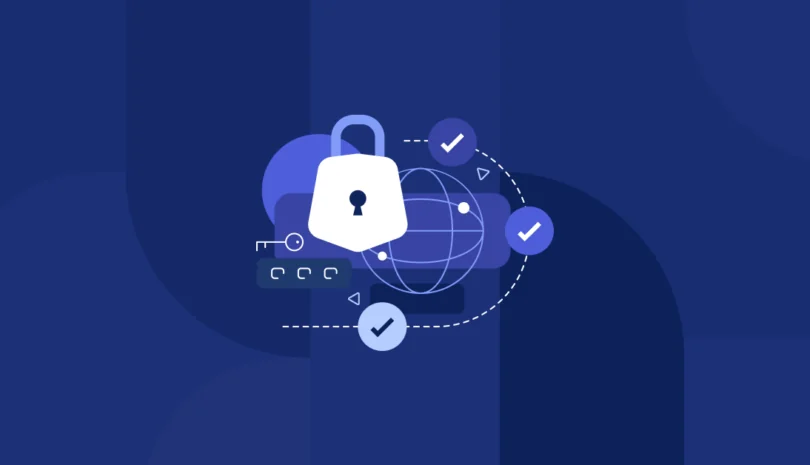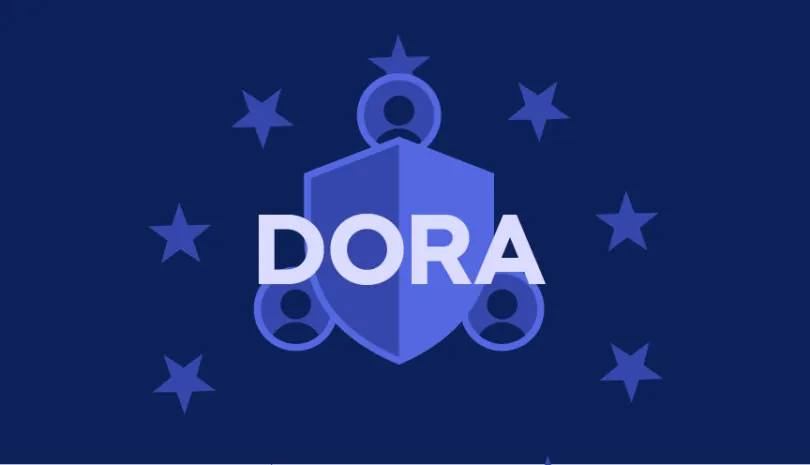MiFID II third-party risk management isn’t optional anymore. As investment firms lean on cloud platforms, trading software, and data providers, regulators expect outsourced services to meet the same bar as in-house operations. That means boards and executives remain responsible for governance, resilience, and auditability across the vendor chain.
This guide connects MiFID II’s core rules to everyday vendor oversight. We’ll focus on what you can do to stay compliant while reducing operational risk. Use it to pressure-test your program, tune your contracts, and align control owners across risk, compliance, IT, and procurement.
What Is MiFID II?
MiFID II is the EU’s Markets in Financial Instruments Directive. It’s been in force since January 3, 2018, alongside MiFIR. The goals are straightforward: stronger investor protection, more transparent markets, and sturdier trading infrastructure. It sets organizational requirements for firms, tightens rules on conduct, and expands pre- and post-trade transparency.
Who’s in scope? EU investment firms, obviously. But it also covers credit institutions handling investment services, market operators, and those data reporting service providers you’ve probably heard about – APAs, ARMs, and CTPs. Even third-country firms serving EU clients through authorized routes need to pay attention.
In practice, if you execute, route, advise, or report trades for EU clients, MiFID II’s organizational and recordkeeping rules likely apply to you.
Why MiFID II Matters for Third-Party Risk Management
MiFID II makes clear that outsourcing doesn’t outsource accountability. When you delegate “critical or important” functions, senior management stays responsible for outcomes. Your vendors and their subcontractors must operate to the same standards on governance, controls, and transparency.
That puts common services squarely in scope. Cloud hosting for trading tools is a perfect example. So is your order-routing software, market data feeds, and the systems capturing communications. The practical upshot? You need a tighter vendor lifecycle where scoping becomes deliberate, contracts get sharper teeth, evidence collection becomes routine, and you maintain the ability to audit, test continuity, and walk away without leaving clients stranded if things go south.
MiFID II Requirements Relevant to TPRM
MiFID II and its Level 2 measures lay out exactly how you should handle outsourcing. Governance matters. So does risk mitigation, audit access, resilience, and keeping proper records. Let’s connect those policy requirements to what you actually need to do when managing your vendors day-to-day.
Governance and Oversight
Senior management owns the governance of outsourced services. They set your risk appetite for outsourcing, approve critical engagements, and then challenge whether your controls actually work.
To make oversight real instead of theoretical, you’ll want to focus on a few key actions:
- Document who approves new outsourcing arrangements (or material changes to existing ones) and what criteria they use to make those decisions.
- Assign a control owner to each critical vendor and require them to report to the management body on a regular schedule.
- Give the board a single view of concentration risk, exit feasibility, and regulatory findings so they can see the full picture.
Risk Mitigation Controls
You can’t introduce undue operational risk when you rely on third parties. That starts with proportionate due diligence and continues with ongoing monitoring tied directly to risk.
Build your control set around the failure modes that could actually hurt your clients and market integrity:
- Assess security, service resilience, change management, and incident response capabilities before you onboard a vendor.
- Track concentration risk. This includes scenarios where the same provider supports multiple functions, as well as geopolitical and cross-border data transfer risks.
- Calibrate your monitoring to impact. Functions that could disrupt client service need more testing and attestations than low-risk vendors.
Auditability and Access
Your contracts need to protect your right to audit and give regulators access to data, systems, and even physical premises when they need it. Sure, pooled audits and third-party certifications are helpful, but they’re not a substitute for your ability to dig deeper when something doesn’t look right.
The trick? Build these rights into the agreement from day one. That way, you’re not scrambling to negotiate access when you actually need it.
- Lock in an unconditional right to information, inspection, and data export for any outsourced function.
- Accept independent reports and certifications as a starting point, but keep the option to expand the audit scope if you spot gaps.
- Make sure those same rights flow down to any subcontractors involved in the service.
Business Continuity and Resilience
If a vendor is critical to your operations, they need to keep you running when things go sideways. MiFID II expects you to document disaster recovery plans, test them regularly, and maintain service quality even during disruptions or termination.
You can’t just hope your vendor has a plan. You need to design for failure, test realistic scenarios, and always have a credible exit strategy ready.
- Require clear BCP and DR objectives, recovery targets, and proof they’ve tested scenarios that match your actual use case.
- Maintain an exit plan that spells out triggers, timelines, data migration steps, and interim workarounds.
- Revisit substitutability regularly as your architecture and vendor landscape change.
Recordkeeping and Reporting
MiFID II doesn’t mess around when it comes to records. You need comprehensive documentation of services and communications tied to orders and trades, and you need to be able to reconstruct events on demand. Storage requirements stretch at least five years – sometimes seven – and you’d better be able to retrieve them when regulators or clients come knocking.
Your vendors need to meet the same retention, quality, and retrieval standards you do. Otherwise, you’re left holding the bag when something’s missing.
- Confirm that call and e-communications capture covers every relevant channel and device used for in-scope activity.
- For DRSPs (like APAs, ARMs, and CTPs) and any vendors supporting your reporting, lock down storage, integrity, and incident notification requirements.
- Test the entire retrieval process end to end, including exports in durable, tamper-evident formats.
Building a MiFID II-Aligned Third-Party Risk Program
Start by mapping your outsourced processes to MiFID II obligations. Governance sits at the center, with audit access, continuity, and recordkeeping radiating outward. This map becomes your control plan and your vendor tiering logic. You’ll want to get procurement, legal, compliance, and IT risk on the same page about what counts as “critical or important.” That way, the same deals get the same level of scrutiny.
Next, strengthen your selection process. Add questions that directly target MiFID II readiness – things like audit access, data location, how they handle sub-outsourcing, whether they can actually prove retention works, and what exit support looks like. Then bake those points into your contracts. Spell out explicit audit rights. Make sure regulators can access what they need. Lock down data residency protections and transfer safeguards. Set clear incident notification windows. And make recordkeeping mechanics impossible to misunderstand.
Finally, stand up periodic testing. Run sample audits, restore drills, and evidence reviews tied to service impact. This isn’t a one-and-done exercise. It’s ongoing proof that your controls actually work.
TPRM Tools and Technologies to Support MiFID II Compliance
Let’s be honest: technology won’t remove accountability. But it does make compliance repeatable. Focus on three things: visibility, consistent enforcement, and accessible evidence.
Here are the capabilities that help you spot risk earlier and prove your controls are working across critical vendors:
- GRC and TPRM platforms with criticality tagging and obligation mapping, so owners know exactly which controls apply.
- Data loss prevention, encryption, and key management to protect client data handled by vendors.
- Identity and access management, including privileged access, with logs that support audit trails.
- Voice and e-communications capture integrated with immutable storage and fast retrieval.
- Secure messaging and file transfer for regulated workflows, with legal hold and retention policies.
Common TPRM Pitfalls to Avoid
Most findings cluster around the same handful of misses. If you’ve ever felt like you’re cleaning up the same mess twice, you’re not alone. Addressing these gaps early saves you from painful remediation cycles later.
During scoping and contracting, watch out for these common gaps that tend to surface during audits and supervision:
- Ignoring fourth parties. You have no visibility into the critical subcontractors who actually run the service.
- Weak audit clauses. You’re relying only on certifications without retaining targeted audit rights.
- Self-attestations without evidence. You’re missing logs, test results, or recordings to back up vendor claims.
- No executable exit plan. You’ve got “paper exits” that don’t cover data migration, runbooks, or timelines.
- Incomplete communications capture. Traders or advisers are using unrecorded channels or unmanaged devices.
Looking Ahead: MiFID II and the Future of TPRM in Financial Services
EU digital regulation is converging. DORA now sets a horizontal baseline for ICT risk and brings EU-level oversight of critical ICT providers. GDPR continues to govern personal data. For investment firms, MiFID II’s outsourcing and recordkeeping duties still apply, and DORA raises the bar on resilience, incident reporting, and third-party oversight.
Expect supervisors to push for fresher, more complete visibility. They’ll want updated registers of your ICT providers, proof that you actually test things, and a clear line connecting obligation to control to evidence. You can prepare by unifying your vendor inventories, rationalizing controls so they work across frameworks instead of fighting each other, and landing on shared metrics for vendor performance and risk. When compliance, risk, procurement, and legal work from one map, responses are faster and audits go smoother.
Making MiFID II an Advantage in Vendor Oversight
MiFID II is more than a checklist. Treated well, it’s a blueprint for transparency and control across your vendor ecosystem. Clear governance brings faster decisions. Strong auditability builds trust with clients and regulators. Practiced exit plans reduce the fear of lock-in and make negotiations easier.
Embed the principles in your program by focusing on impact first, tying every control back to a real obligation, and collecting evidence as you operate instead of scrambling for it later. Over time, the same habits that keep you compliant also raise operational maturity. You’ll see fewer surprises, cleaner handovers, and steadier service for clients.
Panorays helps you get a clear picture of third-party security posture and compliance readiness across vendors. Our AI-powered platform takes the grind out of assessments, centralizes evidence so it’s actually findable, and supports the kind of continuous oversight that aligns day-to-day vendor management with regulatory expectations in financial services. This approach reflects our mission to reduce supply chain cyber risk and help companies securely do business together at scale.
Ready to strengthen third-party oversight under MiFID II? Book a personalized demo with Panorays today.
MiFID II FAQs
-
It holds firms accountable for outsourced “critical or important” functions. You need to govern them, monitor what’s happening, and collect evidence showing vendors meet your bar for controls, resilience, auditability, and records – just as if the service were in-house.
-
Detailed records of orders, decisions to deal, transactions, and related communications. That includes recorded phone calls and electronic messages tied to in-scope activity, kept in a durable, tamper-evident format for at least five years (and up to seven if required by authorities).
-
Senior management stays accountable. You classify functions by how critical they are, run proportionate due diligence, lock in effective access and audit rights for yourself and regulators, make sure business continuity and exit support are real, keep sub-outsourcing under control, and maintain ongoing monitoring backed by evidence.
-
MiFID II broadened scope across instruments, venues, and roles, strengthened investor protection and transparency, and tightened organizational and recordkeeping rules. For TPRM, that means clearer expectations on governance, audit rights, and continuity across outsourced services.



